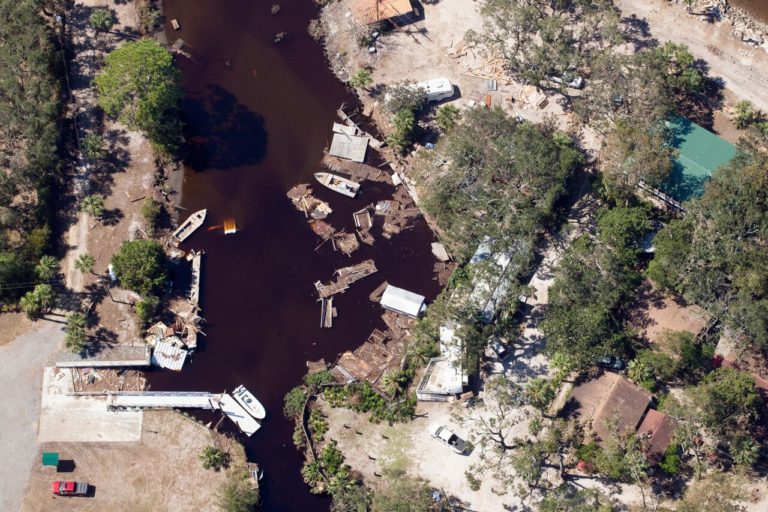
Hurricane season doesn’t end until November 30, but as we assess the damage done so far by 2018’s hurricanes, it’s clearly time to rethink what we build in vulnerable areas, where industry and infrastructure failures can make natural disasters even more dire.
The human toll has been devastating. Hurricane Florence and its aftermath killed 53 people; 45 died due to Hurricane Michael.
The economic costs were also high. North Carolina’s Office of State Budget and Management estimates damage from Hurricane Florence is nearly $17 billion, while Florida’s agriculture commissioner’s most recent estimate of Hurricane Michael’s damage to that state’s agriculture alone was $1.3 billion.
The storms’ environmental toll will be harder to assess.
In the aftermath of Hurricane Michael, which hit October 16, a wastewater treatment plant spilled 80,000 gallons of chlorinated sewage in the Apalachicola river basin and high winds destroyed thousands of trees. Roads and infrastructure were also heavily damaged.
“We still don’t know the full ecological impacts this storm has caused,” says Georgia Ackerman, Apalachicola Riverkeeper.
For the Apalachicola River, infrastructure that hasn’t been built yet proved helpful. Proposed oil drilling in the floodplain, if approved by the state, could change how future hurricanes affect the community, Ackerman says, “Our undeveloped floodplain did a good job of absorbing water.” Fewer impermeable surfaces mean that the ground is able to more easily soak up heavy rains. Building fossil fuel infrastructure in areas of flood risk not only degrade this natural flood protection but also create risks of dangerous fossil fuel spills during extreme weather.
Michael hit Panama City, Florida so hard that Mark McQueen, a retired two-star general whose first day as Panama’s city manager was Sept. 24, told The Panama City News Herald, “This is Baghdad with trees. One hundred percent collapse of infrastructure.”
Emerald Coastkeeper Laurie Murphy worriedly monitored a Chevron petroleum terminal and a coal-fired power plant in the wake of the storm. The Chevron terminal spilled 800 gallons of transmix into the bay, Murphy says.
“Having all these vulnerable sites on the water makes no sense,” she says.
Hurricane Florence hit the Carolinas on August 31. Hurricane Florence, 2016’s Hurricane Matthew and 1999’s Hurricane Floyd all flooded areas of North Carolina forecasters had predicted would flood only once in 500 years. Compounding the devastation was the dangerous infrastructure sited in the floodplain.
In Florence’s wake, coal ash ponds at two coal-fired plants flooded, sending coal ash into the Neuse River, the Cape Fear River, and Lake Sutton.
After the coal ash spill at Duke Energy’s H.F. Lee Plant, Matt Starr, Upper Neuse Riverkeeper, said, “Duke should have learned from Hurricane Matthew that the contents of these coal ash ponds need to be excavated and removed from the banks of the Neuse River, in order to protect our river and communities.”
Waterkeeper Alliance is conducting water testing in North Carolina in the wake of flooding of cesspools full of hog waste on the east side of the state. Smithfield Foods, the country’s top pork producer, should remove its operations from the state’s floodplain so the cesspools don’t dump into the state’s waterways again, Will Hendrick, Staff Attorney and Manager, North Carolina Pure Farms Pure Waters Campaign wrote in a recent Washington Post letter to the editor.
“We’ve been working in North Carolina for over two decades to push industrial animal operations to handle hog and poultry waste in a way that doesn’t harm our air, our water, and our neighbors,” said Hendrick. “We saw during Hurricane Florence that waste mismanagement by these operations exacerbates the threats posed by increasingly frequent and severe storms.”
**Photo: Apalachicola basin, in the wake of Hurricane Michael. Photo by Hurricane Creekkeeper John Wathen.